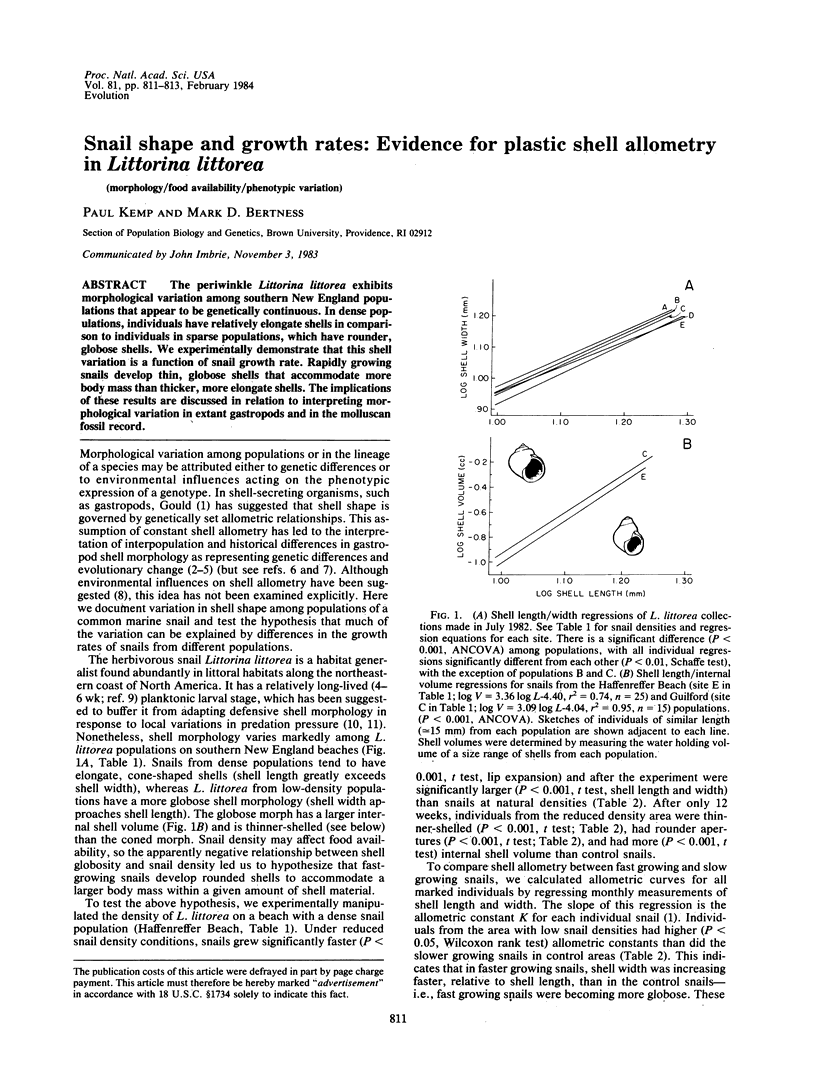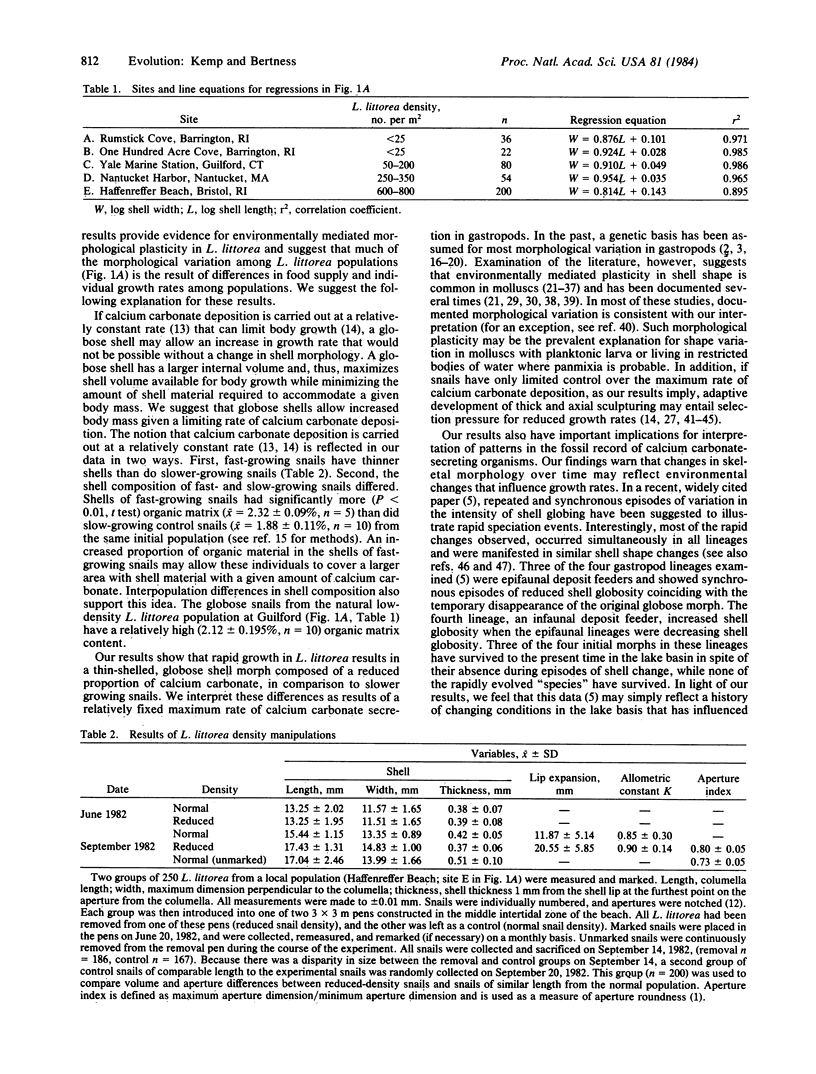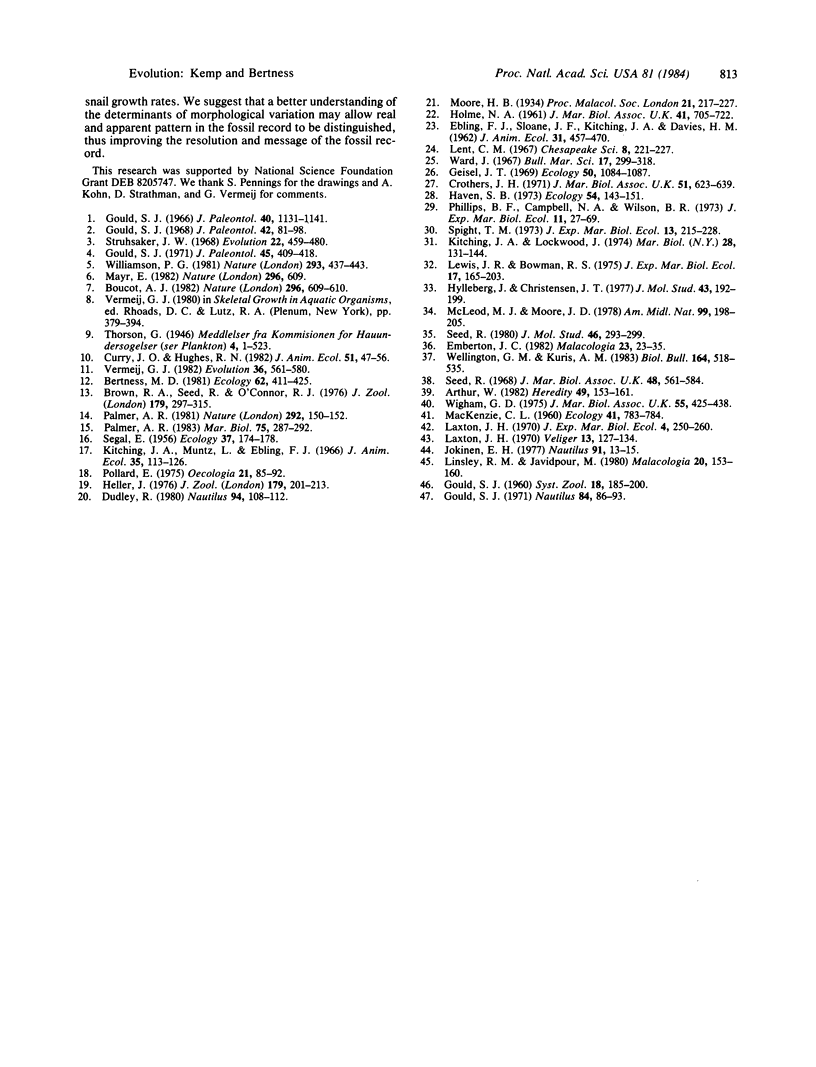Abstract
The periwinkle Littorina littorea exhibits morphological variation among southern New England populations that appear to be genetically continuous. In dense populations, individuals have relatively elongate shells in comparison to individuals in sparse populations, which have rounder, globose shells. We experimentally demonstrate that this shell variation is a function of snail growth rate. Rapidly growing snails develop thin, globose shells that accommodate more body mass than thicker, more elongate shells. The implications of these results are discussed in relation to interpreting morphological variation in extant gastropods and in the molluscan fossil record.
Keywords: morphology, food availability, phenotypic variation
Full text
PDF




